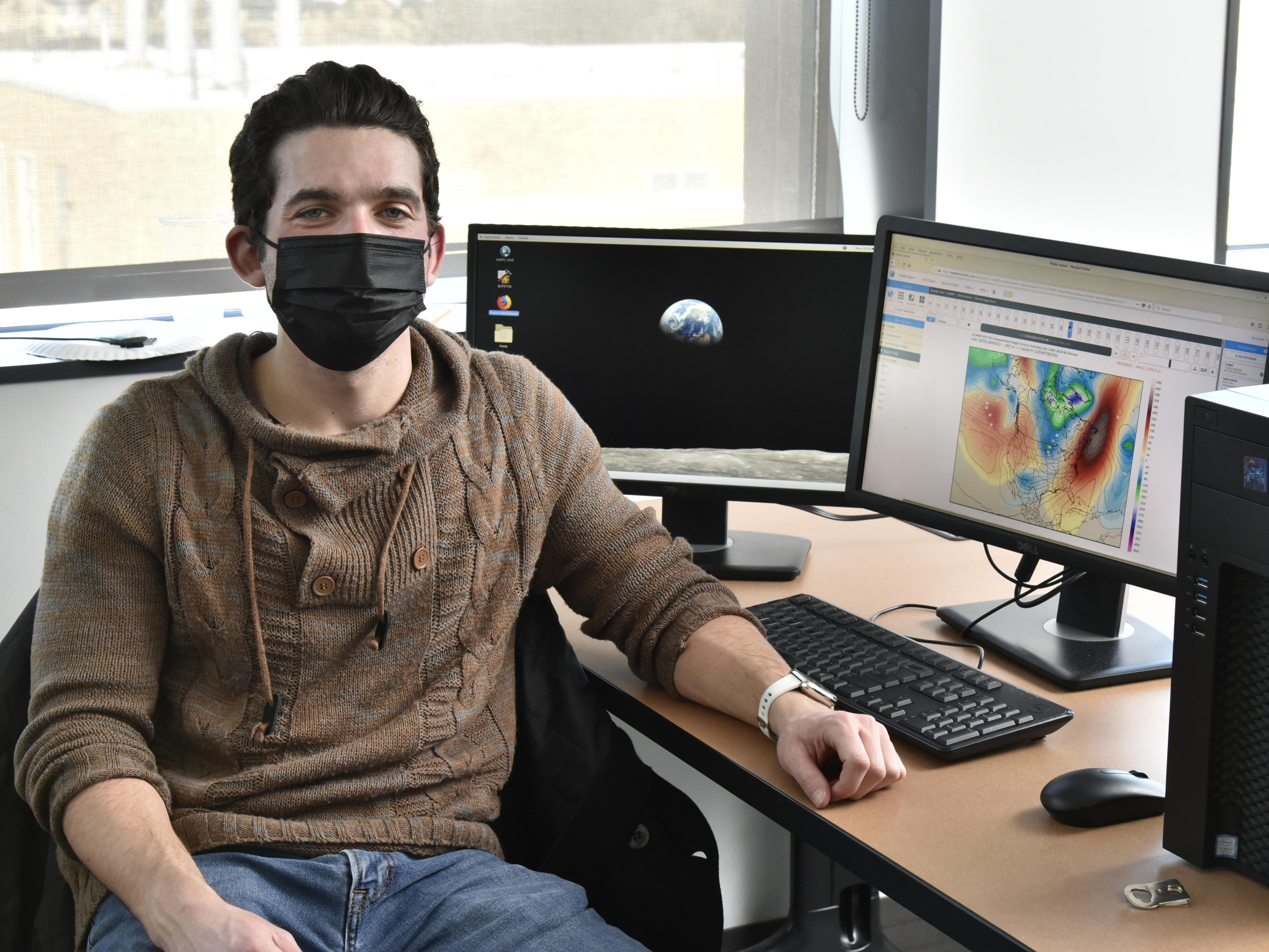SUNY Oswego student researcher Adam Nahar, shown in a meteorology lab, is seeking public feedback about how people interact with winter weather alerts.
It’s a winter day in Upstate New York and you receive a severe weather alert. What do you do next?
Do you feel a sense of panic? Do you read the alert intently and completely? Or do you just discard it because you think they have been wrong in the past?
This is what SUNY Oswego senior meteorology major Adam Nahar wants to know. Nahar’s current research project seeks public feedback to learn more about what people do with the information, and perhaps ways the process can improve.
Nahar’s online survey targets counties most impacted by lake-effect snow across Upstate New York, so he is trying to cast a wide net with a survey open throughout the month of February.
“Lake-effect snow is such an intense spatial issue but alerts are issued for such a broad area,” Nahar said.
An alert for Oswego County, for example, ranges from Phoenix down near Syracuse to Oswego and Fulton in the middle of the county to northern Oswego County towns on the Tug Hill plateau, like Redfield, that often receive a significantly larger snowfall than the rest of the county.
Specifically, Nahar recalls a blizzard warning a couple years ago for a few feet of snow that mainly applied to northern Oswego County, almost an hour away from the city of Oswego, which only received a few inches.
“The goal is to see if it’s turned into the big bad wolf where some people might not pay attention to them any more, or what other scenarios might exist,” Nahar explained. “Do some members of the public take these reports verbatim or do they just not trust them? And if people do read them, do they look at the parts of the alert that clarify specific areas impacted?”
For the survey, Nahar thought it was important to make sure it also informs people and builds awareness on how alert systems work while seeking feedback. In the survey, which takes only a few minutes, he gauges people’s perceptions of weather patterns and terms, and what they do when they receive alerts.
His target market for the survey is anybody in Upstate New York impacted by lake-effect snow – thus residents from Western, Central and Northern New York to the south and east of Lake Ontario.
Nahar admitted that he became really interested in snow growing up in Rochester, which like Oswego sits along Lake Ontario and receives a lot of lake-effect snow. When it came to pursuing a career in meteorology, SUNY Oswego is well known for its faculty, facilities and frequent visits from the fluffy precipitation.
“I knew Oswego had a really good meteorology program, and a great location right on the lake to study weather,” Nahar said. “It’s close to the Tug Hill and all its snowfall. The college has observation decks and cameras that give you a lot of ways to observe and learn.”
The survey is available online at bit.ly/weather-survey.




